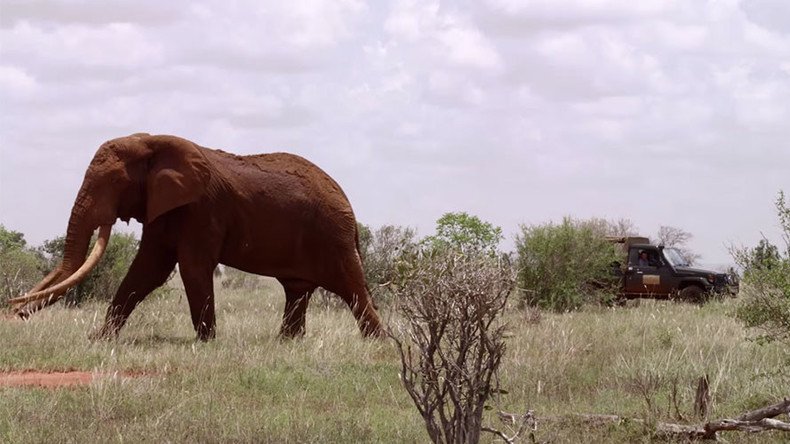Poachers kill rare giant elephant, one of last of its kind in Africa

Satao II, one of Africa’s seven oldest and largest elephants, has been found dead in a national park in Kenya. The killing of one of only around 25 so called “super-tuskers” is being blamed on poachers.
The carcass of 50-year-old Satao II was spotted by Tsavo Park rangers during routine aerial reconnaissance on Monday and was later found to have a poisoned arrow embedded in his body. The park measures 16,000 square miles (42,000 sq. km), an extraordinarily difficult area to patrol effectively. Two rangers have been killed in the last month, trying to fend off poachers.
"Luckily, through the work we do with the Kenyan Wildlife Service (KWS), we were able to find the carcass before the poachers could recover the ivory," Richard Moller of the Tsavo Trust told AFP.
Giant elephant Satao 2 poached in Tsavo, 6 super tuskers left - Africa Geographic https://t.co/y747jjZjhdpic.twitter.com/1IZ7PlnGww
— Stephen Musyoka (@smusyoka) March 6, 2017
In the past decade, elephant populations have fallen by 111,000 to 415,000, according to the International Union for Conservation of Nature.
Tuskers are elephants who boast extremely large, and thus valuable, tusks, often in excess of 80lbs (36kg). Ivory reached prices of up to $1,100 per kilo on the black market as of November 2015, but with a ban being imposed in China this year prices are expected to fluctuate.
A ‘tusker’ is an #elephant whose tusks each weigh in excess of 100 lbs / 45,45kg. With #Satao's death, there are only 6 left in the world. https://t.co/qw0lutU8Db
— Konstantin Kirilov (@houseofhegira) March 6, 2017
Satao II’s predecessor Satao was killed in 2014 and was believed to be one of the largest of his kind on Earth at the time.
Hope for a slow death to all poachers. #Sataopic.twitter.com/qYHZ41BMcZ
— Aly Shetä (@AHSheta) June 15, 2014
Two suspected poachers were taken into custody thanks to the quick work of the park rangers.
"I am pretty gutted, really. This particular elephant was one that was very approachable, one of those easy old boys to find. Many are the others are much more difficult to see," Moller told AFP.
Magnificent #Satao found poached in Tsavo, only 6 #Tuskers remain💔 #AfricaGeoghttps://t.co/LefUo2h0mJ Please HELP! #TsavoTrust & @DSWT 💔
— Joan Rollins (@joan_rollins) March 6, 2017












